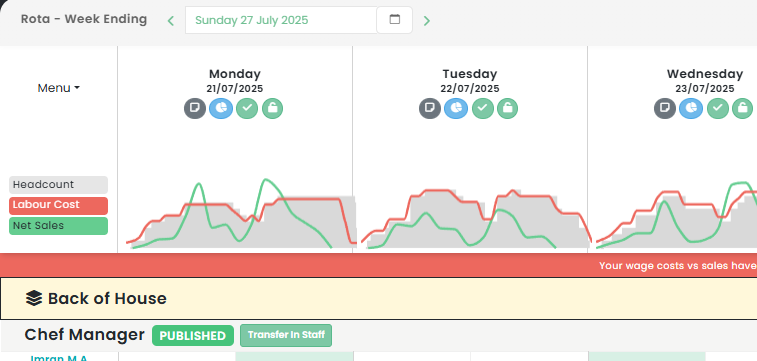Unlocking Financial Success: Understanding the Average Profit Margin in the Restaurant Business
Stay informed with industry news, tips, and practical guides for hospitality professionals.
Understanding the Average Profit Margin for a Restaurant
In the world of hospitality, the restaurant business stands as a competitive and dynamic sector. For entrepreneurs keen on venturing into this industry, understanding the average profit margin for restaurants is a fundamental aspect of business planning and decision making. This article explores the restaurant profit margin, factors influencing restaurant profitability, and tips for managing restaurant profits.
Defining the Restaurant Profit Margin
The restaurant profit margin is a measure of a restaurant's profitability. It is calculated by subtracting total costs from total revenue, then dividing the result by total revenue. This key performance indicator gives a clear view of the restaurant's financial health, effectiveness of its pricing strategy, and its competitive position in the market.
What is the Average Profit Margin for Restaurants?
The restaurant industry profit margin varies significantly depending on factors such as location, restaurant type, operation size, and management efficiency. However, the average profit margin for restaurants in the UK hospitality industry typically ranges between 3-5% for full-service restaurants, and between 6-9% for limited-service or fast-food restaurants.
Factors Affecting Restaurant Profitability
Several factors can influence restaurant business profits. Key among these are food costs, labour costs, overhead expenses, pricing strategy, and the overall customer experience. High-quality ingredients, skilled chefs, and efficient customer service can lead to increased customer satisfaction and, consequently, higher profitability in the hospitality industry.
Making Profit in the Restaurant Business
Making profit in the restaurant business requires a strategic approach that balances income and expenses. Effective menu pricing, cost control, waste reduction, and unique value propositions are among the strategies that can improve a restaurant's earnings.
Managing Restaurant Profits
Monitoring and managing restaurant profits is crucial for the restaurant's financial success. It requires implementing effective cost management strategies, leveraging technology for efficiency, and using data-driven insights to make informed decisions. Regular financial audits can also help to identify areas of improvement and potential growth opportunities.
The Hospitality Industry Profit Margin
While the hospitality industry profit margin can vary widely, the restaurant sector tends to have thinner margins due to the high operational costs. Nonetheless, with the right strategies and operational efficiencies, restaurants can still attain a healthy profit margin.
Conclusion
In conclusion, understanding the average profit margin for restaurants is key to achieving financial success in the restaurant business. It allows for better financial planning, performance benchmarking, and strategic decision making. With effective strategies for managing restaurant profits, restaurant owners can ensure their business remains profitable and competitive in the UK hospitality industry.
Ready to simplify hospitality ops?
We’ve got you.
Speak with an Opsyte expert to see how we help:
- Save hours on staff scheduling and rota planning
- Automate invoice processing and financial insights
- Track live labour costs vs sales in real-time
- Get fast answers and support from real humans
- Automate your P&Ls

“Opsyte transformed our entire back office. Game changer.”
Read articles from our hospitality experts
-
Boosting Guest Satisfaction: Effective Strategies for Enhancing Customer Experience in the Hospitality Industry
Enhancing Customer Experience in the UK Hospitality IndustryUnderstanding and improving the Customer Experience is pivotal in shaping the success of the UK's Hospitality Industry. With consumers' expectations constantly evolving, businesses…...
-
Maximising Customer Satisfaction: Comprehending and Implementing QSR Standards in the Quick Service Restaurant Industry
Understanding QSR Standards in the UK Hospitality IndustryQuick Service Restaurants (QSRs), colloquially known as fast-food outlets, have become vital components of the UK's hospitality industry. They offer a convenient, affordable…...
-
Revolutionizing the Nightlife: Innovative and Profitable Bar Business Ideas for the Hospitality Industry
Ideas for Bar Business: Fostering Success in the UK Hospitality IndustryThe UK hospitality industry is a vibrant and dynamic sector, offering an array of opportunities for bar entrepreneurship. A successful…...
-
Minimising Food Waste in Restaurants: A Comprehensive Guide to Sustainable Practices in the Hospitality Industry
How to Reduce Food Waste in Restaurants: A Guide to SustainabilityThe hospitality industry plays a significant role in the global sustainability mission, especially concerning food waste management. By focusing on…...
-
Maximising Your Profit Margin: Essential Tips for Restaurant Management and Operation for Financial Success in the Food Service Industry
Running a Profitable Restaurant: Strategies for Success in the UK Hospitality IndustryIn the dynamic UK hospitality scene, running a successful restaurant business is both an art and a science. It…...
-
Leveraging Catering Software for Efficient Event Management in the Hospitality Industry: A Comprehensive Guide to Optimizing Event Catering, Online Booking, and Food Service with Advanced Catering Tools and Solutions
Revolutionising the Hospitality Industry with Catering SoftwareIn today's rapidly evolving digital landscape, the hospitality industry is not left behind. The integration of technology, notably catering software, is transforming the way…...
